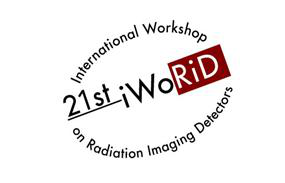Speaker
Description
Silicon radiation sensors typically have an inactive volume at the device periphery necessary to accommodate multiple guard-rings and current terminating structures necessary to deliver increased breakdown voltage and stability and to shield the active area from the defects induced by the dicing procedure.
The extension of the dead region can be as wide as a few mm, depending on the thickness and resistivity of the wafer as well as on the performance requirements for the sensor. There is a demand in both industrial and scientific communities for "edgeless" silicon radiation sensors where the insensitive edge area is reduced to a minimum. This would allow for the reduction of geometrical inefficiencies and for the seamless tiling of multiple sensors into matrices, to ensure large area coverage without distortions or missing data.
The need for "edgeless" detectors has initiated the efforts to engineer the state-of-the-art silicon radiation sensors in order to drastically reduce the dead periphery of the devices [1]. The fabrication of edgeless radiation detector has so far been demonstrated at SINTEF, VTT, and FBK. The "edgeless" feature is realized by etching deep trenches around the active area of the sensor using deep reactive ion etching (DRIE) and by doping the trenches heavily to prevent the depletion region from reaching the damages induced by the etching procedure. In order to maintain the wafer integrity during and after the DRIE process, the device wafer is fusion bonded to a support wafer prior to DRIE, which, for most applications, must be removed after the sensor processing has been completed. The removal of the support wafer is very challenging, making this traditional approach far from ideal for productions with high yield and low cost.
At SINTEF we have recently developed a simplified method to fabricate edgeless sensors without the need for a support wafer. This method was conceptualized [2]. Instead of a continuous trench surrounding the active area of the sensor, a segmented trench is created, leaving enough silicon in place to ensure mechanical integrity without the use of a support wafer. We call this approach "perforated" edge (Fig.1). After doping of the trench segments, the unetched material between segments is doped by deep drive-in, thereby effectively forming a fully doped "wall" throughout the entire thickness of sensor. Once the wafer processing is completed, the edgeless sensors can be safely singulated using conventional saw dicing methods.
The sensors presented here, were fabricated on 300 µm thick, FZ high resistivity n-type wafers. The electrical characterization was performed using a manual probe station before and after dicing, on 5x5 mm2 edgeless diodes. The full depletion voltage as extracted from C-V measurements is ~45 V. The leakage current at full depletion is < 100 pA, comparable to the leakage current of their counterparts with traditional guard ring edge termination. The breakdown voltage is still above 300 V even after dicing through the center of the trench segments, demonstrating that this novel edge termination can prevent edge-related early discharge. After dicing 10 µm inwards from the center of trench segments, the leakage current dramatically increases at 135 V as the depletion region is not shielded from the dicing region anymore.
We have successfully demonstrated a method for the fabrication of edgeless silicon radiation sensors with edge insensitivity of < 10 µm, without using a support wafer. This method is simpler, more cost effective, and delivers a higher throughput when compared to the traditional edgeless detector fabrication methods that have been previously demonstrated. At the conference we will present details on design, fabrication, electrical and functional characterization with focus on the signal efficiency and response uniformity of the edge termination of these newly developed edgeless detectors.
REFERENCES
[1] C.J. Kenney, et al., "Active-edge planar radiation sensors", Nuclear Instruments and Methods A, Vol. 565 (2006), p. 272-277
[2] G.-F. Dalla Betta, et al., "Recent development and future perspectives in 3D silicon radiation sensors", Journal of Instrumentation, JINST 7 C10006.
